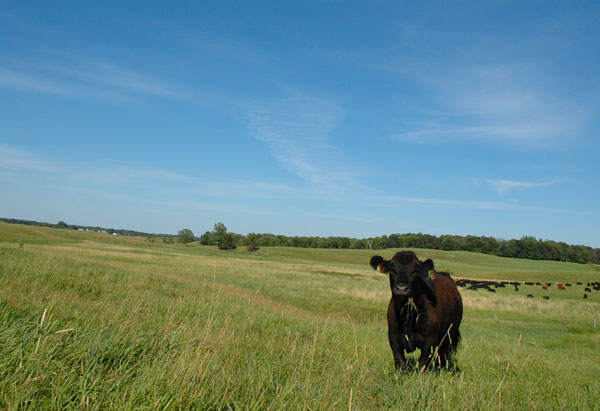The extension applies to general CRP practices and producers must submit a request to their Farm Service Agency county office indicating the acreage to be grazed.
September 10, 2012

As you slug through the drought, keep in mind that last month USDA extended by two months emergency haying and grazing on Conservation Reserve Program (CRP) acres. Grazing on eligible CRP land can continue through Nov. 30, 2012, without incurring an additional CRP rental payment reduction. The period normally allowed for emergency grazing lasts through Sept. 30. The extension applies to general CRP practices and producers must submit a request to their Farm Service Agency county office indicating the acreage to be grazed.
By the end of August, according to USDA, the U.S. Drought Monitor indicated that 63% of the nation's hay acreage was in an area experiencing drought, while approximately 72% of the nation's cattle acreage was in an area experiencing drought. At the time, USDA had designated 1,892 unduplicated counties in 38 states as disaster areas; 1,820 of those declarations due to drought.
Producer Tool: Spreadsheet Calculates Cost Of CRP Hay And Grazing
According to USDA's Sept. 10 Crop Progress report, recent rains have improved the nation’s pasture conditions, albeit, minimally (see below), as of the week ending Sept. 9.
The monthly USDA Crop Production report and World Agriculture Supply and Demand Estimates (WASDE) – scheduled for release Wednesday – will provide more clarity about the extent of damage to this year’s crops.
Last month, WASDE estimates went from predicting record corn production of 14.8 billion bu. – 2.4 billion bu. more than the previous year – in May, to August estimates of 10.8 billion bu. – 2.2 billion bu. lower than the previous month’s estimate. Estimated yield of 123.4 bu./acre would be the least since 1995-96. Corn production would be the lightest in nine years.
WASDE corn price estimates went from $4.20-$5.00/bu. in May to a season average estimate of $7.50-$8.90/bu. in August.
For the week ending Sept. 9, according to the National Agricultural Statistics Service:
Corn – 93% is in the dent stage, 13% more than last year and 16% more than the five-year average. 58% is mature, 33% more than last year and 31% more than the five-year average.15% is harvested, 10% more than last year and the five-year average. 52% is in Poor or Very Poor condition, compared to 20% a year ago. 22% is in Good or Excellent condition, compared to53% last year.
Soybeans – 36% are dropping leaves, 24% more than last year and 16% ahead of the average. 4% is harvested, 3% more than last year and 2% ahead of the average. 32% is in Good or Excellent condition, compared to 56% a year ago. 36% is rated as Poor or Very Poor, compared to 17% last year.
Sorghum – 93% is headed, 2% more than last year and 3% ahead of average. 69% is coloring, 10% more than last year but on par with the five-year average. 37% is mature, 8% more than last year and 7% more than average. 26% is harvested, 4% more than last year and 3% more than average. 24% is in Good or Excellent condition, compared to 25% last year. 52% is in Poor or Very Poor condition, compared to 45% last year.
Winter wheat – 4% is planted, 1% less than last year and 2% less than the average.
Barley – 95% is harvested, which is 16% more than last year and 13% ahead of normal.
Pasture – 18% of the nation’s pasture and range is rated as Good or Excellent, 14% less than at the same time last year. 58% is rated Poor or Very Poor, 16% more than a year ago. States reporting more than 60% of pasture as Poor or Very Poor were: Arkansas (68%); California (70%); Colorado (87%); Indiana (62%); Iowa (77%); Kansas (89%); Missouri (92%); Montana (71%); Nebraska (95%); Nevada (77%); New Mexico (86%); Ohio (66%); Oklahoma (78%); South Dakota (76%); Wisconsin (60%); and Wyoming (85%).
About the Author(s)
You May Also Like





